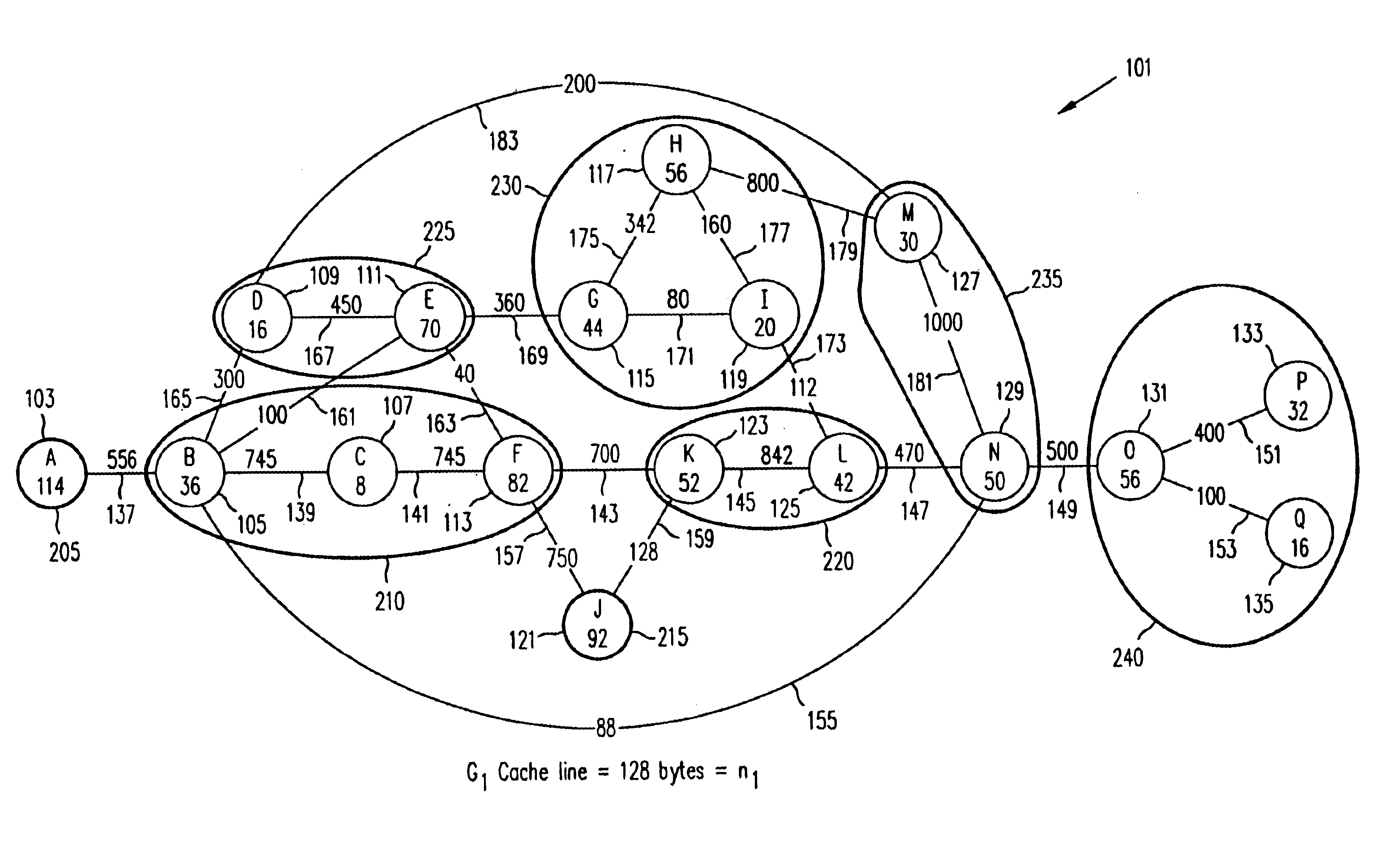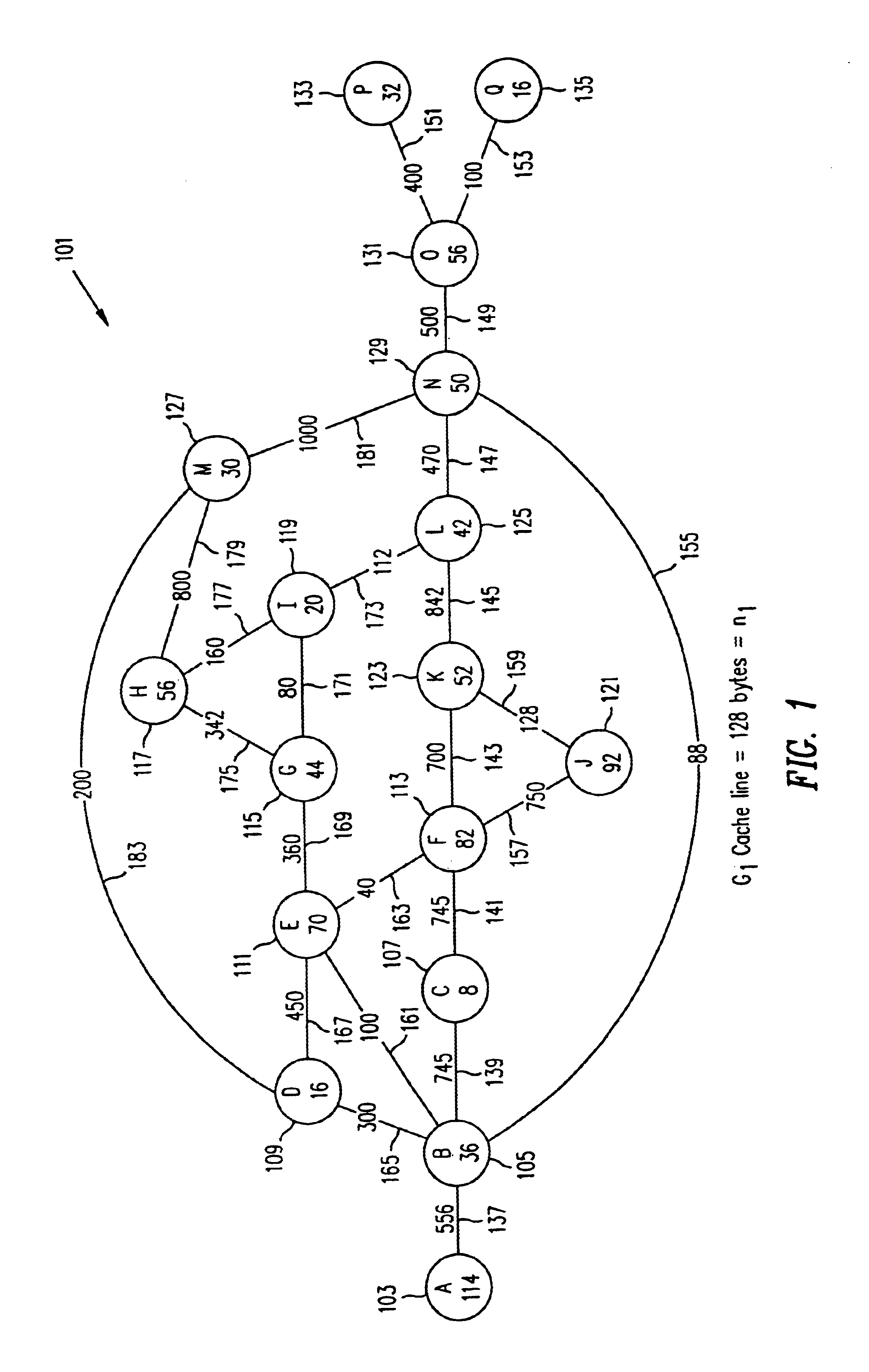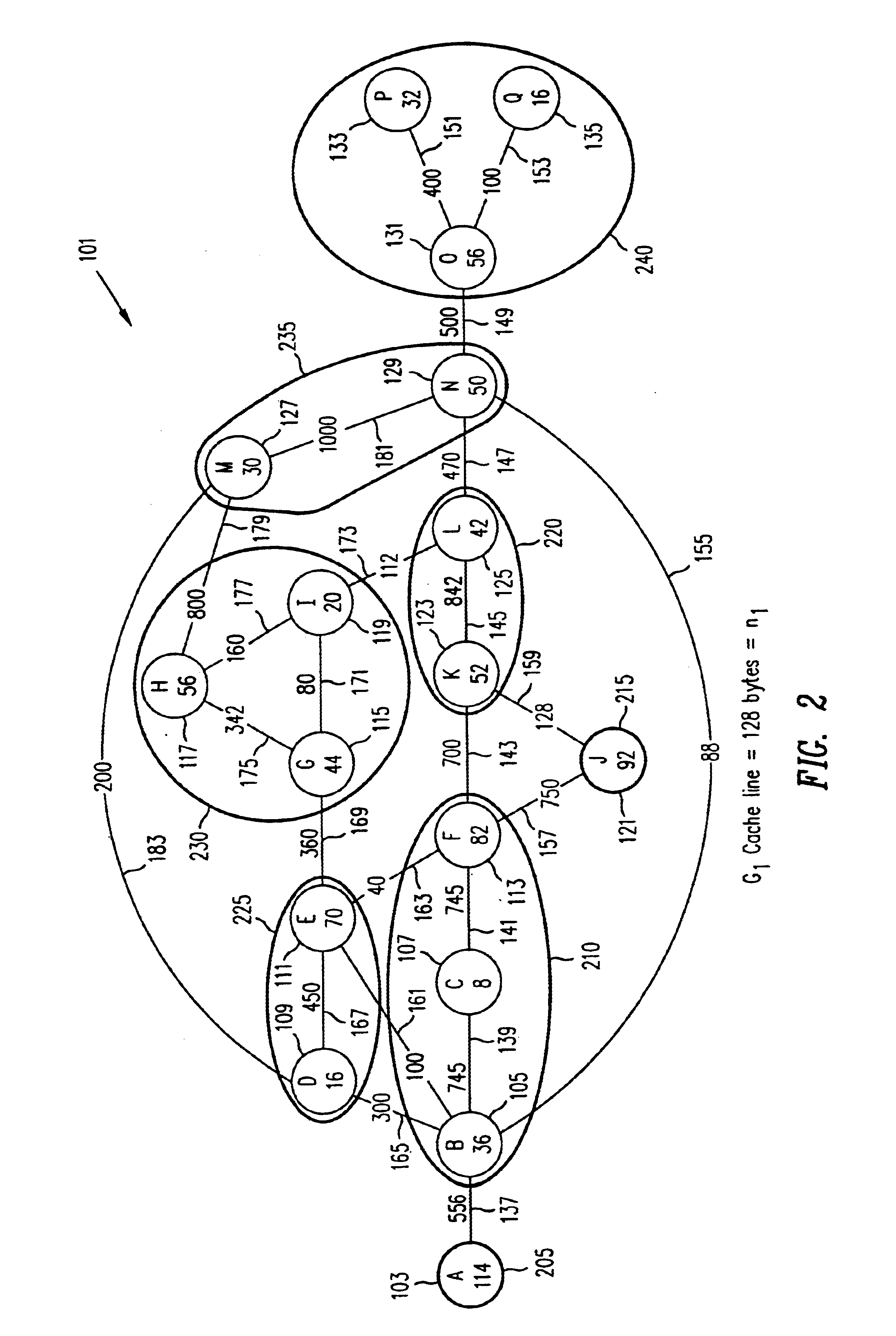Method of, system for, and computer program product for providing efficient utilization of memory hierarchy through code restructuring
- Summary
- Abstract
- Description
- Claims
- Application Information
AI Technical Summary
Benefits of technology
Problems solved by technology
Method used
Image
Examples
Embodiment Construction
Referring now to FIG. 1 through FIG. 5, sample Program Execution Graphs are shown to illustrate the practice of the present invention. The control flow and frequency information of the profiled program is organized in the form of a Program Execution Graph (PEG) which is a weighted undirected graph. For example, FIG. 1 illustrates a PEG G1, generally referred to as 101, where Gi=(V1, E1). A node in the set of nodes V1 corresponds to a basic block that has been executed at least once during profiling. For G1 101, the set of nodes V1 comprises the set {A 103, B 105, C 107, D 109, E 111, F 113, G 115, H 117, I 119, J 121, K 123, L 125, M 127, N 129, O 131, P 133, and Q 1135}. An edge (u, v), in the set of edges E1, between nodes u and v implies that there is some transition that occurs during profiling between the two basic blocks represented by u and v. For G1 100, the set of nodes E1 comprises the set {(A, B) 137, (B, C) 139, (C, F) 141, (F, K) 143, (K, L) 145, (L, N) 147, (N, O) 149,...
PUM
 Login to View More
Login to View More Abstract
Description
Claims
Application Information
 Login to View More
Login to View More - R&D
- Intellectual Property
- Life Sciences
- Materials
- Tech Scout
- Unparalleled Data Quality
- Higher Quality Content
- 60% Fewer Hallucinations
Browse by: Latest US Patents, China's latest patents, Technical Efficacy Thesaurus, Application Domain, Technology Topic, Popular Technical Reports.
© 2025 PatSnap. All rights reserved.Legal|Privacy policy|Modern Slavery Act Transparency Statement|Sitemap|About US| Contact US: help@patsnap.com



